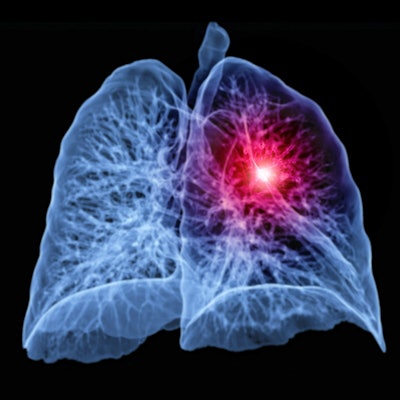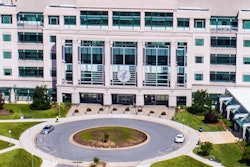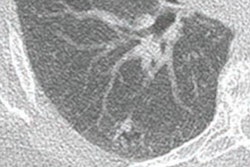
Is the 2021 guidance on CT lung cancer screening from the U.S. Preventive Care Services Task Force (USPSTF) cost-effective? Maybe, but other screening protocols might be more so, according to a study published October 21 in JAMA Oncology.
Tinkering with eligibility criteria a bit more could further curb healthcare costs, wrote a team led by Iakovos Toumazis, PhD, of the University of Texas MD Anderson Cancer Center in Houston.
"[Our] economic evaluation found that the 2021 USPSTF recommendation for lung cancer screening was cost-effective; however, alternative screening strategies that maintained a minimum cumulative smoking exposure of 20 pack-years but included individuals who quit smoking within the past 25 years may be more cost-effective and warrant further evaluation," the group noted.
In March, the USPSTF released updated guidance that reduced the starting age for CT lung cancer screening from 55 to 50 and adjusted smoking history from 30 pack years to 20 pack years. Toumazis and colleagues investigated whether this new recommendation is more cost-effective than the task force's 2013 guidance, and they also analyzed six other screening strategies that kept the 20-pack-year measure and set a screening ending age of 80 but varied in starting age for screening and number of years since quitting smoking.
The authors used simulated models based on a 1960 birth cohort and a timeframe between January 2005 and December 2050. They defined a cost-effective lung cancer screening strategy as one that had a mean incremental cost-effectiveness ratio (ICER) lower than $100,000 per quality-adjusted life year (QALY).
What did the group find? The 2021 CT lung cancer screening guideline is more cost-effective than the 2013 iteration -- despite the fact that it expands the pool of eligible individuals. But it was not the top option when compared with the six alternative strategies, the team noted.
Of these other protocols, two were particularly effective at curbing costs while also providing the greatest health benefits (such as highest number of screening-detected cases, lowest percentage of overdiagnosed cases, lung cancer deaths avoided, and reduction in disease mortality -- what the team called the "efficiency frontier").
| Cost-effectiveness and highest health benefit of CT lung cancer screening strategies | |||
| Measure | 2021 USPSTF recommendation | Alternative strategy 4 (Screening start at age 55 years and end at age 80; minimum cumulative smoking exposures of 20 pack years and maximum of 25 years since quitting) | Alternative strategy 6 (Screening start at age 50 and end at age 80; minimum cumulative smoking exposure of 20 pack-years and maximum of 25 years since quitting) |
| Mean ICER per QALY gained | $72,564 | $66,533 | $73,952 |
| Mean ICER per QALY gained versus 2013 USPSTF strategy on efficiency frontier | $104,273 | $74,502 | $87,115 |
| Screening-detected cases | 1,254 | 1,331 | 1,394 |
| Overdiagnosis percentage | 6% | 6.2% | 6% |
| Lung cancer deaths avoided | 467 | 487 | 519 |
| Reduction in lung cancer mortality | 11.7% | 12.2% | 13% |
Even though alternative strategy 4 had a lower ICER per QALY than some of the other screening options, it offered "screening coverage to a portion of the U.S. population that was similar to that of the 2021 USPSTF recommendation," and "was associated with greater cost-effectiveness, improvements in lung cancer-specific mortality, and reductions in the number of low-dose CT screenings," the team explained.
The study findings point to the work that needs to be done to firmly establish lung cancer screening uptake, according to an accompanying editorial written by Dr. James Mulshine of Rush University Medical Center in Chicago and colleague Bruce Pyenson of Millman in New York City.
"Now is the time for a concerted push for lung cancer screening implementation," the two wrote. "The numerous improvements in lung cancer screening since the NLST [National Lung Screening Trial], ranging from underlying technologies to intervention management to patient support, mean the screening process will likely be even more beneficial than in the past trials. The substantial increase in treatment costs for late-stage lung cancer make the economic case for early detection even more apparent."



















